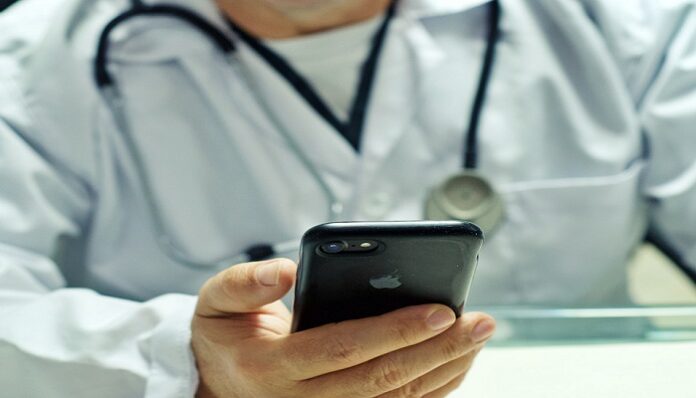Abstract
Social media has evolved into a basic organ system of common man including surgeons. We as surgeons need to engage ourselves in social media more systematically to reap its immense benefit as a professional. Though most of the users are conversant with social media interfaces, effective and tactical use is inadequate. It is the need of the hour that we adopt and transform ourselves professionally and use SM in a more desirable manner.
Introduction
The worldwide accessibility to the internet has redefined the manner in which people interact with each other and the lovechild of the World Wide Web is social media (SM). In 2020, the global SM usage rate reached 49 percent, with East Asia including India, having the highest penetration rate at 71percent. [1]
The power of social networking is such that the number of worldwide users is expected to reach 3.43 billion monthly and by 2023, around a third of Earth’s entire population with approximately a 450 million from India alone would be SM engagers. [2]
The various social networking platforms include photo- and video sharing platform (Instagram), messaging apps (WhatsApp, Facebook Messenger, Twitter) and hybrid platform (Facebook). All of these have strong user engagement metrics with Facebook ranked first with over one billion active monthly user.[1, 2] In recent years, social networking has demonstrated a clear shift towards mobile platforms. These applications have heightened the profile of social networking and have enabled comfort to the users. On average, internet users spend 144 minutes per day surfing social networks. [2] This has prompted worldwide brands to use that time and screen space to promote various products and services via SM marketing or social advertising.
There has been a paradigm shift for maintaining public relation from traditional means to technology based platforms. Surgeons like any other profession have been engaging themselves in SM albeit without knowledge of its proper application. Their nonstrategic SM approach is the primary reason why they are behind other profession in reaping benefits out of this powerful and economically viable tool. This article highlights the present scenario of surgeon’s engagement in various social media platforms and suggests mechanisms for inducing professionalism in the use of SM.
The Social Platforms [1,2,3]
SM with interactive features has knocked out passive single avenue media platforms in term of activism and viewership. The Facebook-owned WhatsApp is one of the most popular messaging services in the world. Its accessibility, cross-platform functionality, and simple, straightforward features has made it an essential part of everyday life.
Knowing and understanding different SM platforms, can open up new ideas and channels for engaging with the audience more effectively. Table 1 briefly illustrates the various social media platforms.
SM offers patients and health professional to communicate about a variety of health issues. Patients cannot only seek information but also can share their experiences thus forming health groups and communities with similar diseases. This provides patients with informational, emotional, and social support to cope up with their illness. Moreover it facilitates surgeons’ interactions, enhance their practice and share de-identified cases, exchange questions and experiences regarding particular techniques and practise. This enhances the possibility and potentiality in improving health outcomes.
Current Social Media Practise by Surgeons


Presently surgeons engage in SM with a broad utilitarian approach to participate, share opinions, photos, audios, videos, and collect beneficial information. The most used SM platforms by the surgeons in decreasing order include Facebook (37.9%), YouTube (35.7%), Twitter (34.5%), Google+ (17.9%), Research gate (9.8%), LinkedIn (7.7%), and Instagram (3.9%).[5] The use is a hybridization of professional and personal life. They are unfamiliar regarding professional communication, despite online and SM becoming an increasingly common feature of clinical practice. Uncertainty also exits of their ethical and legal obligations. Due to improper knowledge and professional internet literacy, surgeons are yet to fully integrate online communication and SM into their clinical practice, and many are unable to protect their personal information. This limited competency in managing the online information means that the possible advantages of an internet presence are lost and increases the risk of negative experiences, further reinforcing avoidance of the use of social media. Currently, more than 40% of the health care consumers utilize social media for their healthcare information needs.[1, 2]
SM has been a large distraction in the workplace. Highly tempting use for recreational purposes during work decreases productivity by 1.47%.[3] Moreover, majority of health care administrators and healthcare workers including surgeons are unaware of the social media policy at their workplace. While the perception for negative impact on productivity and efficiency may exist conversely many use social media as a tool for research dissemination, education and training.
Making a positive impression and to have a need to feel valued are basic human instincts and surgeons are no exception. The urge of putting greater spotlight on their personal contributions becomes obligatory. Over exaggeration of this leads to gasconading effect which is at its peak in SM. Tooting one’s horn is not viewed that favorably. Most cultures value humility and showing off is not considered kosher. There are other reasons to dislike bragging as well, such as the fact that too much of it can distort sense of reality. An inflated ego may overestimate one’s impact on SM, and this skewed perception can strain personal and professional relationships. Moreover, placing one’s self in a positive light leads to lower self-awareness, which leads to poor choice making and bad decisions.[6]
Tips and Tricks for Impactful Social Media Inter-action [4-6, 7-10]
SM and healthcare are a powerful combination. It is hard to know how to navigate the challenges of SM. Surgeons need to create engaging social content. That content also needs to be informative, timely, and accurate. At the same time, need to follow all relevant industry rules and regulations is obligatory. Enumerated below are some tips on how a surgeon can keep social channels compliant and secure.
1. Carefully define your ideal target audience. The first and foremost postulate of using SM is to distinguish between profession and personal particulars. The classic mistake of being everything to everybody should be disregarded. The SM profile need to have restricted access based on demographics and psychographics of the responders.
2. Creating accounts. Facebook, YouTube and Instagram are the most active SM channels. Creation of account profile should begin with popular SM channels with descriptive words that responders use. Primary SM presence should be built around the social choices of target audience. Plan sufficient resources.
3. Quality content counts the most. Publish regularly. Information needs to be accurate and authoritative. Quality content must be interesting, understandable and compelling. After all, content that is boring (and never read) is ineffective in building relationships,
4. Commit to being present regularly. SM takes time to develop, and that requires a regular presence and consistent participation. Devote the time, talent and resources to making daily updates and postings. If you are not prepared to sustain the effort over time, don’t begin until you are ready.
5. Useful information becomes shared information. Publish content that readers (and prospective patients) can use. Useful information is shared in social circles and connections. Over time, useful and quality content engenders trust, shows expertise and reflects thought leadership.
6. Call on professional help. Social media for doctors can be demanding. Reach outfor help in the planning, design and effective posting of social materials designed to meet or exceed your goals.
7. Cross-promote your social self. Provide visitors with a line-up of your SM icons. Give everyone the ability to switch from one SM to another.
8. Images add impact and interest. Virtually every social platform provides for easily using pictures, videos, GIFs or other image enhancements.
9. Include emojis in Facebook updates. Love ‘em or hate ‘em, emojis capture attention. Use these little digital images or icons to reinforce an idea or sentiment.
10. Include keywords in social profiles and content. Refine the list of words and terms your patients and prospective patients are likely to use in online searches.
11. Keep post updates short and sweet. Strive to present a single idea in a clear but compact message.
12. Share your updates and entries multiple times. The social media stream moves rapidly and single entries are easily missed. Vary your info and post as a different message at different times of day.
13. Listen to the voice of the users. Social media provides online “listening posts” for providers to hear and understand discussions, trends and issues that are important to patients and prospective patients. This is fodder for timely engagement.
14. “Tell. Don’t sell.” Social interaction is fuelled by informative discussions and authoritative presentations. Content that teaches, informs or updates is valuable. Heavy-handed “selling” is a social audience turnoff.
15. Selectively join groups and discussions. Find and participate in conversation opportunities such as Twitter Chats, LinkedIn Groups and similar social platform sub-sections. Look for what you can add to the conversation as well as what you can learn about current topics.
16. Create your own mini-visual quotes. There are several simple-to-use online tools that create useful and attractive quotes for social postings.
17. Jump into existing conversations. Navigate the Twitter stream by searching for pertinent hash tags or keywords of interest. As appropriate, get into the discussions with patients and professionals about timely topics, trends and news items.
18. Ask questions. Be provocative. Inspire discussions. Online SM inspires dialogue (not just monologue.) Consider ways to encourage online interaction with others.
19. Respond quickly to questions, comments and reviews. Immediate responses are often best, although not always practical. Strive for same day reply and response if possible.
20. A consistent NAP is vital. Believe it or not, the fundamental information of Name, Address, Phone (NAP) is vitally important to SM and to search optimization.
21. Always follow other doctors via social media. In addition to building your SM marketing efforts, invest time in connecting with other healthcare professionals. It provides a resource for ideas, tapping into trends, inspiring discussion topics and for finding and sharing professional ideas and information.
22. Track your social media activities. Quantitate the successes and failures of SM campaigns and efforts. There are analytic tools available (many are free) to document and report your wins and losses. (Some SM efforts can take time to gain traction and demonstrate measurable results.) Convert tracking data into actionable steps for improvement.
23. Code of conduct. Surgeons using social media should know the boundaries of the SM platforms. Repercussions of breaching these codes are well defined. It includes penalties ranging from heavy fines, to license suspensions, to criminal charges.
Conclusion
Surgeons are no different than the general population in adopting SM for their personal use. As the Internet has matured, SM has developed and become a part of our everyday life. Presently we communicate with each other and the world in a very different manner. As surgeons, it is important that we understand this new technology, learn its limitations, and utilize it to foster growth of professional expertise for better patient care.
Acknowledgement
We are also grateful to Uditangshu De for sharing his pearls of wisdom about social media with us during the course of writing of this article.
References:
1. Logghe HJ, McFadden CL, Tully NJ, Jones C. History of social media in surgery. Clin Colon Rectal Surg. 2017; 30:233–9.
2. Greysen S R, Kind T, Chretien K C. Online professionalism and the mirror of social media. J Gen Intern Med. 2010; 25:1227–1229.
3. Thompson L A, Dawson K, Ferdig R. et al. The intersection of online social networking with medical professionalism. J Gen Intern Med. 2008; 23:954–957.
4. Hamoui N, Lake J, Beart RW, Anthone GJ, Crookes PF. Patterns of internet use: bariatric versus colorectal patients in a private institution. J Am Coll Surg. 2004; 199:223–8.
5. Brown J, Ryan C, Harris A. How doctors view and use social media: a national survey. J Med Internet Res. 2014; 16:e267.
6. AMA Council on Ethical and Judicial Affairs. Professionalism in the Use of Social Media. J Clin Ethics. 2011; 22:97–104.
7. Lake JP, Ortega A, Vukasin P, Kaiser AM, Kaufman HS, Beart RW Jr. Internet use by colorectal surgery patients: a surgeon’s tool for education and marketing. Am Surg. 2004; 70:553–8.
8. Yamount S Z, Lind D S, Monson R A, Glick P L. Using social media to enhance surgeon and patient communication and education. Bulletin of the ACS. 2011; 96:8–15.
9. Justin P. Wagner, Amalia L. Cochran, Christian Jones, Niraj J. Gusani, Thomas K. Varghese, Deanna J. Attai, Professional Use of Social Media Among Surgeons: Results of a Multi-Institutional Study. Journal of Surgical Education 2018; 75:804-810.
10. Kwon Soo-Ha, Goh Raymond, Wang Zeng-Tao, et. al. Tips for Making a Successful Online Microsurgery Educational Platform: The Experience of International Microsurgery Club, Plastic and Reconstructive Surgery. 2019; 143:221e-233e.
+

























